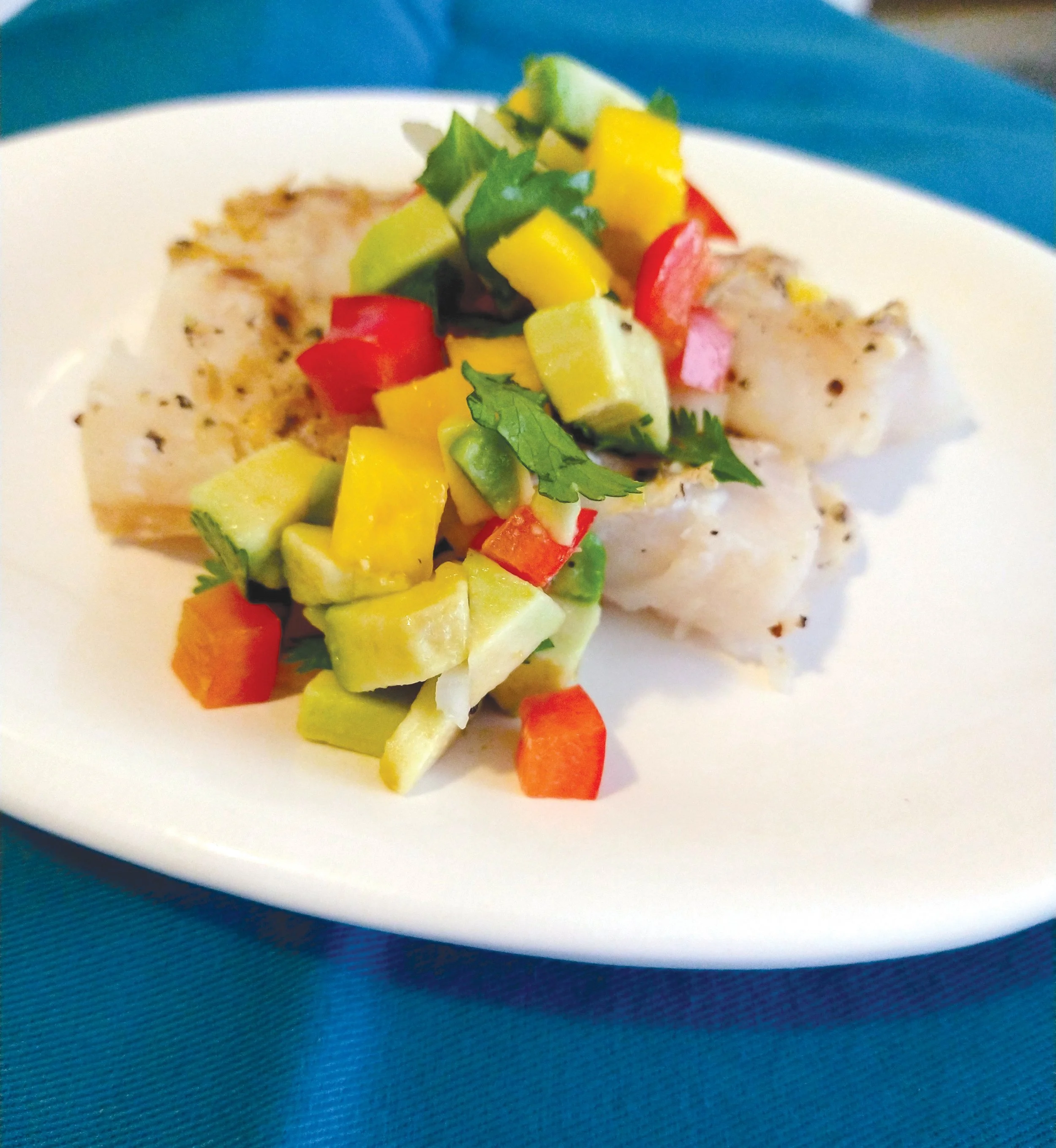Just for the halibut
A Pinch of Salt
By Donna Marie Riani
The beginning of May is an exciting time for seafood enthusiasts, as it’s the start of halibut season. On the Oregon Coast, halibut season is at its peak from May to September. We have two types here: California halibut and Pacific halibut. These large, flat, one-eyed fish have firm flesh but are nice and flaky and have a slightly sweet flavor. They can average in weight from a petite 20 pounds up to 150 pounds. There are even some on record weighing as much as 700 pounds. I can’t even picture that, but I can picture the huge fish fry I could have — I would invite the whole town and probably still have leftovers. Boy would that be a fun party!
The filets of the halibut are the star of the show, but if you can get your hands on a whole one, don’t forget to cook the cheeks — halibut cheeks are rich, fatty, buttery little morsels that are incredibly delicious.
Because halibut have firm flesh, they can stand up to pretty much any cooking method: steamed, fried, grilled or baked. You will see halibut on many local restaurant menus in everything from soups and chowders to sandwiches, salads and tacos.
This recipe for Tropical Halibut is very much inspired by the flavors of Jamaica. It’s a very portable meal and can be eaten hot off the grill or at room temperature. There’s a chance you may have more salsa than you need, so I recommend that you have a bag of tortilla chips on hand to scoop up any extra. To round out the meal, I would serve it over basmati rice.
To me, this meal just begs to be eaten al fresco. I would portion the halibut and salsa in individual containers, grab some silverware and nice cloth napkins and go to your favorite outdoor spot. We all know there’s no shortage of beautiful places to dine outdoors here. You certainly don’t need to eat it outdoors but I think you should — just for the halibut!
Tropical Halibut with Mango Avocado Salsa
4 halibut fillets, 6 ounces each and about 1 inch thick
3/4 cup plus 2 tablespoons orange juice
1/3 cup dark rum
1/4 cup soy sauce
2 tablespoons plus 1/4 cup lime juice
1 tablespoon freshly grated ginger
2 teaspoons sea salt, divided
1/2 teaspoon ground allspice
2 mangoes, diced small
2 avocados, diced small
1/4 cup red bell pepper, diced small
1/4 cup sweet onion, diced small
1 small bunch cilantro, roughly chopped (optional)
1 jalapeño or other hot pepper, finely diced (optional)
To make the marinade, place 3/4 cup of orange juice, rum, soy sauce, two tablespoons lime juice, ginger, one teaspoon salt and allspice in a 13”x9” pan. When everything is mixed, add the halibut fillets and coat them in the marinade. Cover the container. Marinate the fish for one hour in the refrigerator. Flip the fish over after 30 minutes to make sure both sides of the fillets get bathed in the marinade. There is quite a bit of acid in this marinade so don’t marinate the fish longer than one hour or it will affect the texture.
While the fish is marinating you can make the salsa. In a medium bowl combine the mango, avocado, two tablespoons orange juice, 1/4 cup lime juice, bell pepper, onion, cilantro, jalapeño and one teaspoon of salt. Mix to combine and let sit at room temperature. As it sits the flavor will develop.
Halibut is fantastic grilled. I love that little bit of char on it. You can use an outdoor grill or an indoor grill or a grill pan. If you don’t have any of these you can pan-sear the fish in a skillet on a stove top and it will be just as delicious. If you are grilling the fish, be sure to preheat your grill or grill pan, and make sure to oil it so the fish doesn’t stick.
Remove the fish from the fridge, take it out of the marinade and place it on a plate. Pat it dry with a paper towel — you don’t want the fish dripping wet when it goes on the grill or it will steam instead of sear. Place the fillets over direct medium — high heat. I recommend cooking it for about four minutes per side. You will know the fish is cooked through when it starts to flake and is no longer opaque inside. Don’t turn the fish too much or it will start to fall apart.
To serve, place a fillet on a plate and top with as much of the salsa as you like.

